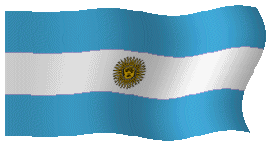
B"H
Jewish  Tours
Tours
 Buenos Aires, Argentina
Buenos Aires, Argentina
ARGENTINA, South American Federal Republic, general population (2004) 39,150,000; Jewish population 190,000.
The official attitude of Argentinean authorities toward
Jewish immigration was based solely on the pertinent clauses of the national
constitution. Thus, the committee responsible for immigration overruled the
immigration officer's opposition to the admission of the Jews who had arrived on
the Weser. It was argued even then,
Despite the small size of their community, their feeling of transience (expressed by a certain degree of emigration back to Europe), and their poverty, by 1914 Argentinean Jewry had founded many organizations to fulfill religious and material needs and dispel a sense of cultural alienation in a strange land. Ashkenazim and Sephardim acted separately, according to the organizational and ideological experience they had brought with them. The Sephardim established small individual groups, organized on the basis of their geographical origin and designed to fulfill limited religious, welfare, and educational needs. These small institutions were gradually organized within four communal frameworks, each with its own cemetery: the Jews from Morocco founded the Congregación Israelita Latina in 1891; the Jews from Damascus founded their Bene Emet (Hijos de la Verdad) burial society in 1913, and two main synagogues, Agudat Dodim (1919) and Or Tora; the Jews from Aleppo founded their main religious organization, Yesod Hadat, in 1912 and their burial society, Chesed Shel Emet Sefaradit, acquired a cemetery in 1920; the Jews from Turkey, Rhodes, and the Balkan countries founded several small communities that were gradually consolidated around the Asociación Comunidad Israelita Sefaradí (ACIS), which was founded in 1914 by Jews from Smyrna. ACIS became the main communal framework for all the Sephardim of Ladino-speaking origin, when it acquired its cemetery in 1929.
The Ashkenazim, on the other hand, founded a network of religious, social, educational, cultural, and political organizations. The most prominent Ashkenazi religious and assistance organizations were the Burial Society (Chevra Keduscha Aschkenazi) founded in 1894, Bikkur Ḥolim (1896), and Ezrah (1900) – which provided medical aid, orphanages, homes for the aged, etc. The dominant political organizations were the various Zionist groups, founded as early as 1897 in the agricultural colonies and in Buenos Aires, which eventually imparted a strong Zionist orientation to the entire Jewish population of Argentina. Counteracting the Zionist organizations, including the *Po'alei Zion Party formed in 1909, were Bundist, anarchist, and communist groups. The Bund members tried to establish linguistically autonomous (Yiddish) sections within some of the general trade unions. The communists succeeded later in establishing a Jewish section (Yiddish-speaking) in the Communist Party. All organizations had varied cultural programs, which, except among the religious Zionists, emphasized a secular nationalist or cultural orientation toward Judaism. These activities included establishing libraries, schools, encouraging the development of a native literature, and experiments in theatrical production.
The immigrant colonists were accompanied by their shoḥatim and rabbis; the first of them was Rabbi Aaron Goldman of Moisesville. Religious life in the colonies at first followed traditional patterns, as exemplified by the foundation of a short-lived yeshivah in Colonia Belez (1907–08). However, isolation and lack of Jewish education combined with other factors to cause a decline in religious life. In Buenos Aires, where the Congregación Israelita de la República Argentina already existed, additional minyanim were organized: Po'alei Ẓedek, which established the first talmud torah; Maḥazikei Emunah, which brought the first official shoḥet to Buenos Aires in 1892 and built the first mikveh in 1893; and the Congregación Latina of the Jews of Morocco. Until 1897 Jews were buried in the Protestant cemetery; later, tombs had to be leased in a Catholic cemetery. It was only in 1910 that the Jews were able to overcome economic and legal difficulties and acquire their own cemetery. Although the white-slave traders already had a cemetery before 1910, none of the respectable Jews agreed to be buried in it.
The polarization of class and political opinion, the wide
social and cultural gap between immigrants from Eastern and Western Europe, and
personal ambition prevented the establishment of centralized organizations in
Argentina during this period. The first attempt was made in 1909 with the
establishment of the Federación Israelita Argentina, but this organization did
not last after 1910. In 1915, when news of the fate of the Jews in war-stricken
areas of Russia and in Palestine began to arrive, the Central Committee for the
Jewish Victims of the War was established as the fundraising organ of the
Argentinean Jewish community. In February 1916 the Congress of Argentinean Jewry
was convened through the initiative of the Zionists and with the participation
of all Jewish organizations, except those of the extreme left wing. The Congress
declared the prime postwar demands of the Jewish nation to be equal rights for
the Jews of the Diaspora and Jewish independence in Ereẓ Israel, and
resolved to ask the Argentinean government to support these demands. When the
*Jewish Legion
was
Antisemitism was rare throughout this period. Nevertheless, when a Jewish anarchist, Simon Radowitzky, assassinated the chief of police, Ramón Falcón (Nov. 14, 1909), there were some repercussions against the Jewish population as such. Murders of Jewish settlers in the agricultural colonies resembled incidents between gauchos and settlers of other origins.
|
Visite nuestro sitio/Visit our home page: |